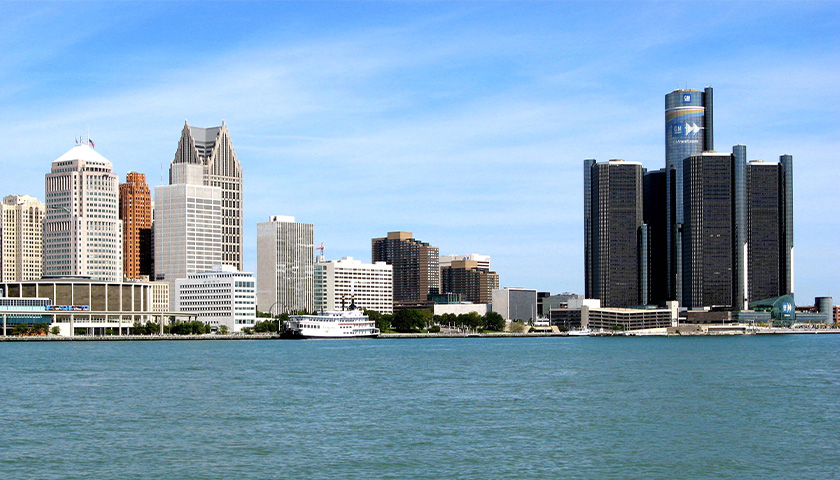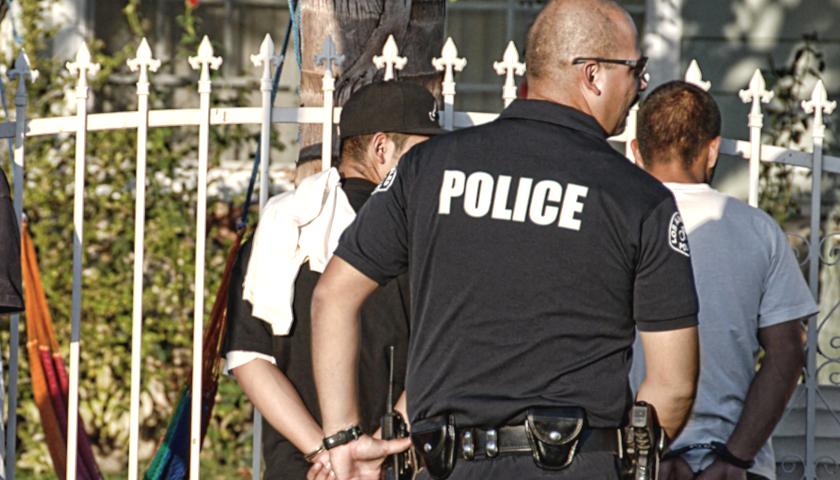by Lloyd Billingsley
“In the 1950s,” writes J. Eric Wise in “The French Exit: A Detroit Love Story,” Detroit was “outwardly living well, a very healthy city, technologically advanced, with economic diversity, prosperity, peace, and civil life supporting the arts and sciences.” That is no exaggeration, as this writer can testify.
As Wise explains, Detroit prospered enormously from World War II and attracted workers from far and wide. My father, a mechanical engineer, was among them. In 1952, he moved our family from Alliance, Ohio, to Detroit, Michigan. The Big Three automakers gave him all the work he could handle.
We rented the first floor of the house at 2010 Clements Street, pretty much in the middle of things. I helped my father shovel coal into the furnace down in the basement, perhaps the first work I ever performed. The streetcars were still running then and ice men plied the streets. There had been riots in 1943, as Wise notes, but in our experience race relations were cordial.
In May of 1953, my brother Phillip came along, a native Detroiter. Things were booming then, and that made for a thriving nightlife. As Joe Tex said in “Detroit City,” by day they made the cars, by night they hit the bars. Musicians, too, had all the work they could handle.
Jazz greats hailing from Detroit include Hank, Thad, and Elvin Jones, Gerald Wilson, Pepper Adams, Milt Jackson, Yusef Lateef, Donald Byrd, Tommy Flanagan, Kenny Burrell, Ron Carter, and many others. When we hit town, the trend was rhythm and blues, raucous, soulful music yet to be rebranded “rock and roll.”
Berry Gordy founded Motown records in 1959 but also developed the Gordy label, with singers such as Bunny Paul, from the European immigrant community. Here she is on “We’re Only Young Once,” reportedly with Martha Reeves among the backup singers. Martha would soon sing lead for the Vandellas, the name combining a Detroit street, Van Dyke, with Martha’s favorite singer, Della Reese. Berry Gordy also mentored talent such as Smokey Robinson, who had influences of his own.
“There was a guy who lived in Detroit and had a group called the Diablos,” Smokey recalled. “His name was Nolan Strong. They were my favorite vocalists at that time.” Strong was with Fortune Records, a mom-and-pop outfit, and his “Mind Over Matter” should have been a national hit. Nolan was a cousin of Barrett Strong, whose 1959 “Money (That’s What I Want)” helped establish the Motown label, and the rest is history.
By that time we had moved across the river to Windsor, Ontario, where we had relatives, but the move did not really involve a change of city. My father commuted to work over the Ambassador Bridge, completed in 1930 and for a brief time the largest suspension bridge in the world. More than a few Michiganders commuted the other way, common practice in the “motor cities,” as they were rightly known. The mighty Detroit River was both a divider and a uniter.
To the south lies an island the French explorers called the Bois Blanc, the white wood. Under Canadian auspices this became Bob-Lo Island, home to an amusement park operated by an American company. To get there, you boarded one of the Bob-Lo boats, the Columbia and St. Claire, moored at the foot of Woodward Avenue in Detroit. The boats featured live bands and the voyage was half the fun.
Beginning in 1959, the river hosted the International Freedom Festival, a celebration of both nations’ independence days, July 1 and July 4. A barge launched a fireworks display cheered by massive crowds on both sides of the river. The music of the motor cities, on the other hand, faced no borders.
Detroit radio stations WKNR and WXYZ held forth, with disc jockeys Lee Alan and Joel Sebastian playing the hits. The Canadian CKLW, with 50,000 watts of power, could be heard all over the country and became the more influential outlet. Detroit artists would bring flowers for CKLW’s Rosalie Tremblay, who made the call on the playlist.
Bob Seger—originally Bob Seger and the Last Heard—even wrote a song, “Rosalie” about “everybody’s favorite little record girl . . . she’s got the tower, and she’s got the power.” Tremblay also told Elton John if he wanted to sell records in Detroit, he needed to release “Bennie and the Jets” as a single, and he did.
“Little” Stevie Wonder, as he was then known, had a hit with “Fingertips,” and held shows all over the motor cities. So did the Four Tops, with the great voice of Levi Stubbs on “Ask the Lonely.” He could really bring it.
CKLW television also hosted “Swinging Time,” with Robin Seymour, similar to Dick Clark’s “American Bandstand” and a coveted venue for musicians of the time.
The border crossover also extended to sports.
The Detroit Tigers, then playing in Briggs Stadium since 1912, signed Windsor’s Reno Bertoia right out of high school. In May of 1957, Bertoia led the majors with a .398 batting average, and he wound up playing ten years in the pros.
During the 1950s and 1960s, practically every member of the Detroit Red Wings hockey team, Stanley Cup winners in 1950, 1952, 1954, and 1955, was a Canadian. Red Wing Gordie Howe was a towering local hero and even inspired a record, “Gordie Howe (The Greatest of Them All).” That is still a matter of some debate, though Wayne Gretzky tends to agree.
In those days, the bridge and tunnel border stations were basically turnstiles. I shopped at Hudson’s, Tom McCann’s, and other downtown Detroit retailers. The bus went through the tunnel, first opened in 1930. Near the tunnel exit stands the Mariners Church, founded in 1842 as a place of worship and for sailors, who could also find temporary residence there.
The church blocked an area Detroit was clearing for a new civic center, so in 1954 the city moved the entire structure to its current location at 171 E. Jefferson, with new stained glass windows and a bell tower. Just so you know, this is the “maritime seamen’s cathedral” of Gordon Lightfoot’s “The Wreck of the Edmund Fitzgerald.” The Great Lakes are beautiful, but you don’t want to be out there in a storm.
Riots returned to Detroit in 1967, and the seeds of decline were already in the ground. A friend’s father, manager at a Lincoln-Mercury dealership, mocked the first shipment of “Toy-toas.” A few years later, after the Saudi oil embargo, he wasn’t laughing.
The joint Freedom Festival came to a halt in 2007. The border is now Checkpoint Charlie, on both sides. Canada is headed by former blackface performer Justin Trudeau, an open admirer of China’s “basic dictatorship.” In similar style, pasty-faced poltroon Joe Biden declares that the Chinese Communists are “not bad folks.” We never got anything like that from Dwight Eisenhower, president for most of the 1950s, nor even from that Democrat JFK.
If the current ruling class has its way, the nation as we knew it could be making a French exit. That’s what happened in Detroit, where people once lived well, in peace and prosperity. I watched the decline from afar, with great sadness.
Like the cities it joins, the Ambassador Bridge is now showing its age. Plans are in the works for a new span, the Gordie Howe International Bridge. Maybe I’ll cross it someday, perhaps after revisiting 2010 Clements Street, still standing at this writing.
In the meantime, like Ray Charles, I live the life of dreams of yesterday. Like Bob Seger, I remember, I remember. And as Martha Reeves said, I can’t forget the motor city.
– – –
Lloyd Billingsley is the author of Hollywood Party and other books including Bill of Writes and Barack ‘em Up: A Literary Investigation. His journalism has appeared in the Wall Street Journal, the Spectator (London) and many other publications. Billingsley serves as a policy fellow with the Independent Institute.
Photo “Detroit Skyline” by Andrea_44. CC BY 2.0.





